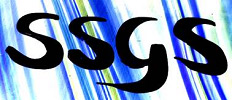Glasgow: Hyndland Parish Church of Scotland, East Window
Sacrifice and Victory
Window of four lights with two quatrefoils and a sexfoil with tracery.
This window is a memorial to the fallen soldiers of the First World War and focuses on the themes of Sacrifice and Victory. Heavenly clouds overarch the upper scenes across the lancets and a rainbow overarches the lower scenes across the lancets.
Lancet 1:
Upper scene: This scene depicts the moment when an Angel of God came and stopped Abraham from sacrificing his son, Isaac as an offering to God. "When he was tried, Abraham offered up Isaac" (Hebrews 11.17)
Lower scene: This scene depicts early history soldiers- Armored and Roman soldiers looking and reaching upwards to a heavenly stream.
Lancet 2:
Upper scene: This scene depicts the crucifixion of Jesus. It illustrates the ultimate sacrifice and the verse: "Greater love hath no man than this, that a man lay down his life for his friends", part of Jesus' farewell to his disciples in St John 15.13.
Lower scene: This scene depicts the high priest Melchizedek blessing Abraham's victory over the enemies who had captured his brother (Genesis 14.14-20): this scene represents the link between sacrifice and victory.
Lancet 3:
Upper scene: This scene depicts victory, with the triumph of good over evil as the archangel Michael casts out the Dragon (Satan) from Heaven. (Revelations 12.)
Lower scene: This scene depicts 3 soldiers.
Lancet 4:
Upper scene: This scene depicts the exodus of Moses and the Jewish people during their exodus from Egypt. "I will sing unto the Lord for he hath triumphed gloriously" (Exodus Chapter 15).
Lower scene: This scene depicts soldiers from WWI looking and reaching upwards towards a heavenly stream of riders on horseback. The seated solider appears in a kilt.
Sexfoil: This depicts St. George astride a white horse.
Quatrefoil left: This window depicts a Pelican plucking at her breast in order to feed her young. The Pelican is a symbol of self sacrifice.
Quatrefoil right: This window depicts a Phoneix rising from flames as a symbol of rebirth
Inscriptions:
The partially obscured inscriptions at the bottom of the window read "But the righteous man, though he die early, will be at rest... Being made perfect in a little while he fulfilled long years for his soul was pleasing unto the Lord. Therefore he hastened him away out of the midst of wickedness", from the Wisdom of Solomon 4.7-15, a book which is part of the Apocrypha, a collection of writings originating between the times of the Old and New Testaments.
Artist:
Douglas Strachan (1875-1950) was born in Aberdeen and educated at Robert Gordon’s College. Strachan took evening classes at Gray’s School of Art. He worked as an apprentice lithographer, a muralist, a portrait painter and then found his passion for Stained Glass as he worked on a commission in the early 20th century. Strachan’s first major design was for the Peace Palace in The Hague installed in 1929. He worked on many memorial windows, including the renowned designs for the Scottish National War Memorial at Edinburgh Castle, from 1923-1927.
Details
| Related Records: | |
|---|---|
| Who: |
Douglas Strachan (artist) |
| What: |
Church of Scotland, First World War Memorial |
| Where: |
Scotland, Glasgow, 81 Hyndland Road, Hyndland Parish Church |
| When: |
1921 (installed) 21-Oct-14 (photograph taken) |
| Resource Rights Holder: | Glasgow City Heritage Trust |
|---|---|
| Record ID: | 000-000-764-011-C |
| Project: | |
| Project Ref: | |
| Material: |
glass, lead |
| Dimensions: | |
| Subject/Keywords: |
memorial, First World War, sacrifice, victory, Abraham and Isaac, soldiers, pelican, phoenix, St. George, Christ on the Cross, Israelites, Egyptians, rainbow, male artist |
| Event: |
First World War |
| Description: | |
| Photographer: | Rachael Purse |
| References: |






